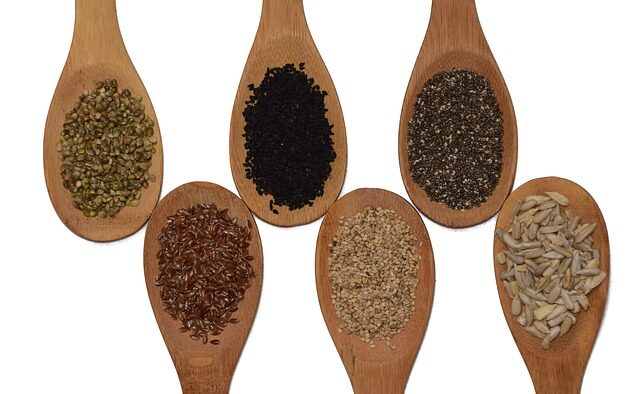Sesame seeds, known as til in Indian languages, are small, flat oval, oil-rich seeds derived from the pods of the Sesamum indicum plant. Sesame is used widely in Indian culture on auspicious occasions, rituals, and religious sacrificial fires due to its spiritual and energetic importance. In the Indian traditional medicine of Ayurveda, it is considered to be an extremely beneficial medicine, especially when used externally. When processed with appropriate herbs that alter its extreme properties of sharpness and heating, it is one of the most excellent therapeutic elements for vata diseases.
The sesame seed is one of the oldest cultivated plants in the world. The historical records of the Indus Valley site at Harappa (2600 BCE) suggest that the sesame plant was domesticated elsewhere in the ancient Indian culture, then spread to Mesopotamia, Egypt and China. Today we see sesame seeds in most Mediterranean cuisines and in far Asia in Chinese and Japanese food. It is also very popular throughout India but seasonally.
The sesame seed is associated with Lord Vishnu, and its derivative sesame oil (gingelly oil) is associated with his consort MahaLakshmi (known as the goddess of wealth). Hindus consider the sesame plant as a password for heaven.
Shatila ekadasi is among the most significant religious days for devout Hindus, in which the use of sesame seeds (til) is celebrated in six (shat) different ways:
• oil bathing
• oil massaging
• food containing tila
• charity (donation) of tila
• putting tila in fire known as havan or homam, and
• oblations to departed souls.
Another holiday for eating sesame-based sweets is Makara Sankranti which coincides with the Pongal festival in Tamilnadu, festivals associated with the solar calendar. The cultural importance of tila in Indian tradition has strong associations with the medicinal properties known to our ancestors.
Ayurveda acharyas describe tila as first in the rank of oils of vegetable origin, due to its wide medicinal role compared to other oils from plants such as coconut, castor, mustard or flax. They detail three varieties of sesame based on colour of seeds: raktha (red), krishna (black) and shweta (white). Krishna tila - black sesame seeds - are considered to have excellent medicinal properties and are preferred if available for in ayurvedic treatments and ayurvedic preparations.
Sesame seeds are a rich source of minerals, especially copper, manganese, calcium, and magnesium; vitamins and high amounts of mono-unsaturated fats. This rich nutritional profile of sesame earned its reputaiton as best among vegetable oils for improving strength of the body.
Sesame seeds are heavy to digest and create increasing moisture in the tissues. They taste sweet and have hot potency (ushna virya). Hence sesame is used in diseases arising from vitiation of vata. It has very specific quality of being “yogavahi,” a substance with the quality of penetrating the deepest tissues.
The ushna (hot) guna of sesame is useful for correcting digestive fire, reducing the aama in the body, which can be beneficial for excess weight gain, diabetes and high cholesterol levels. The snigdha (unctuousness) nature of sesame seeds is explained by a high presence of MUFA (mono-unsaturated fatty acids). Sesame seeds are also beneficial for correction of skin dryness; they promote new hair growth; they promote functions of the brain; and they relieves vata disorders including premature aging.
When used properly, sesame seeds are one of the healthiest food available today. The numerous nutritional and cultural benefits associated with sesame seeds are enough to recommend that everyone should include them in their daily diet in winter in the form of tila ladoo, tila khichari, or just use them as a garnish over dal, vegetables, or rice.





